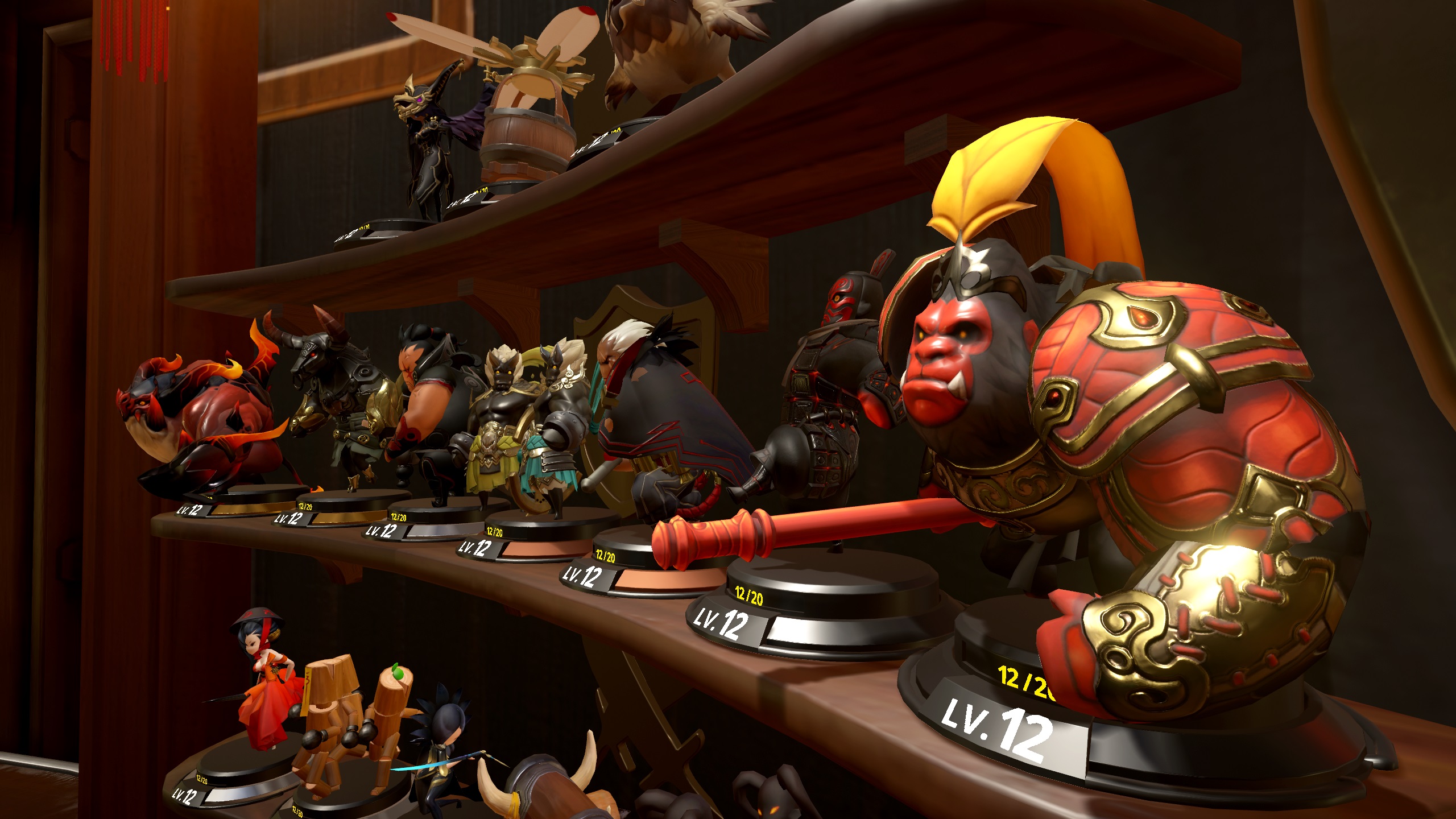Fighting Miniatures: 'Blade And Soul' For Oculus Rift, Hands On
Blade and Soul, a tabletop combat game that utilizes miniatures in your quest to defeat your opponent, is as simple as dropping each miniature unit on the field and hoping it survives long enough to damage your opponent’s troops or buildings. With the Oculus Touch, the game provides the feeling of an armchair general as you continue to summon troops to vanquish enemy forces. Most of the time, it seems possible to win without any game plan whatsoever. However, there’s more to it if you choose your characters wisely.
Learn To Command
At the beginning of the demo, I learned about the game’s mechanics. For every match, I had eight characters or abilities that I could summon onto the battlefield. These range from a small group of fruit-like creatures (that deal a small amount of damage) to a devastating fireball. You also have a maximum of 10 crystals at your disposal, which you can use to summon your miniatures. Each figurine has a specific crystal cost, and usually, the more powerful units and skills will cost more to summon.
If you win the match, you’ll get a treasure box filled with an assortment of items that could include additional figures to add to your collection or gold that you can use to level up your existing miniatures. At a glance, you can tell that each miniature specializes in ranged or melee attacks, but pressing a button on the controller reveals additional stats. With this information, you can fine-tune your battle lineup so that it’s an unstoppable force on the field.
Storm The Castle
The actual game takes place on a small board flanked on both ends by two castles. One belongs to you, and the other is your opponent’s base. The board also includes four towers, split evenly between the two players.
At the start of the match, you can summon creatures and skills only on your side of the field. In order to advance to the enemy castle, you’ll first need to destroy the enemy towers. However, your opponent will attempt to do the same thing, so it’s a matter of not just speed, but matchups as well. With the right plays at opportune moments, you can easily run through enemy defenses and win.
This is where crystal management comes into play. It’s easy to waste all of your crystals to summon multiple characters in a matter of seconds. Each crystal does regenerate after some time, but it’s a long wait, especially if you want to have a display of force with your more powerful units. The best tactic is to choose one or two units to attack while keeping other forces and skills in reserve. This allows you to have an offensive and defensive play at the same time.
In my case, I had some time before my match with fellow colleague Derek Forrest to pick the right miniatures for battle. I had a healthy mix of melee and ranged troops as well as one aerial unit. I even had the aforementioned fireball that allowed me to pick off weak enemies. He, on the other hand, didn’t have ample time to create his own team of miniatures, opting instead to play with the default lineup. In the opening sequences of the match, Forrest and I traded blows as our units met in the middle of the board. Eventually, I gained the upper hand when one of his towers, which he didn’t defend at all, crumbled to the ground. With this advantage, I pressed on, keeping his summoned miniatures distracted while my weaker forces slowly tore through his castle. In less than five minutes, I won with overwhelming force.
Get Tom's Hardware's best news and in-depth reviews, straight to your inbox.
Still Not Enough
After that win, Forrest and I had to leave to try out another VR game, but I left with a question on my mind: "Would I play that game again?" The answer is "Not really." On paper, the game features seem like a suitable title for virtual reality. However, the appeal of playing it in VR disappears after a few matches. The mechanics are easy to learn, and the concept of collecting each miniature can be appealing to some, but the added layer of VR seems unnecessary.
The VR implementation reminds me of another game: High Voltage Software’s Dragon Front, which is a collectible card game for the Oculus Rift. Even though the game was enjoyable, it lacked any features that made it stand out as a VR title. Blade and Soulsuffers from the same problem. Sure, the mechanics would be slightly altered on traditional monitors, but in the end it’s like playing virtual chess: I can choose to play it on my computer, or I can just grab the ol’ board and wooden figures and find a suitable opponent somewhere.
Rexly Peñaflorida is a freelance writer for Tom's Hardware covering topics such as computer hardware, video games, and general technology news.
-
compprob237 I'm glad you specified that it's the tabletop game in the first sentence. I was looking at the picture thinking: How is this like Blade & Soul?Reply -
bloodroses Reply19359918 said:I'm glad you specified that it's the tabletop game in the first sentence. I was looking at the picture thinking: How is this like Blade & Soul?
I was thinking the exact same thing... lol

